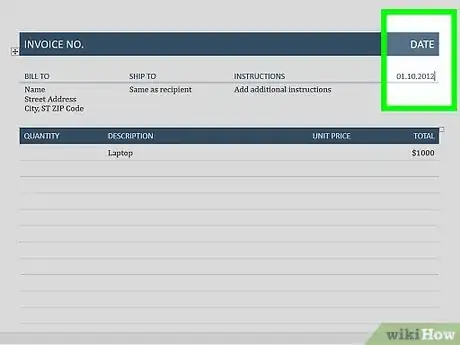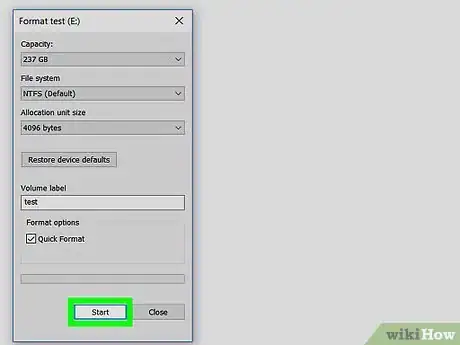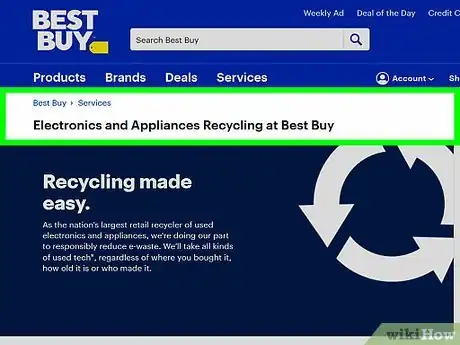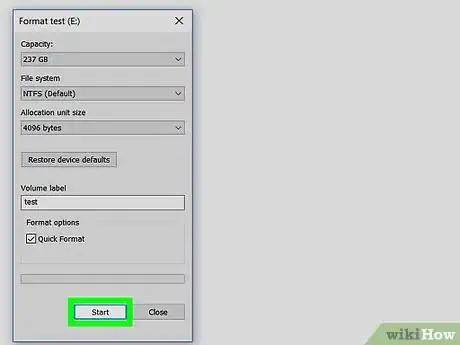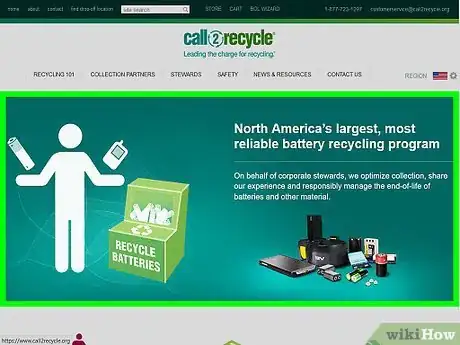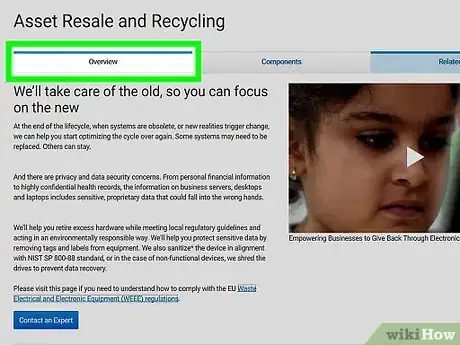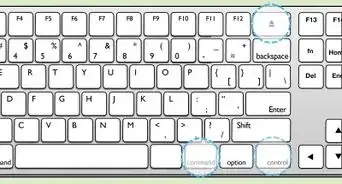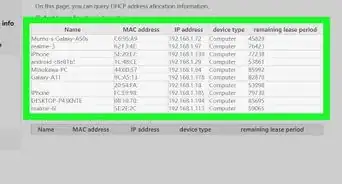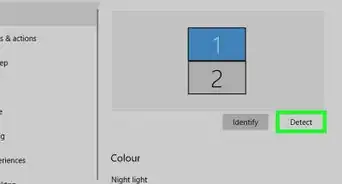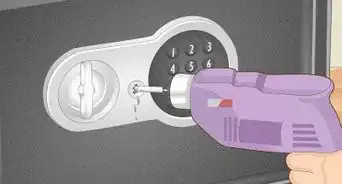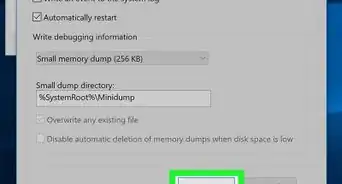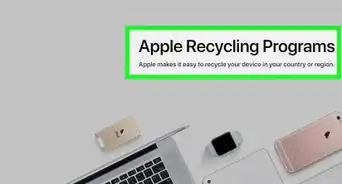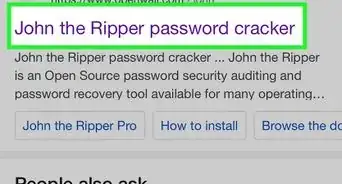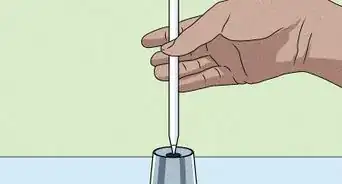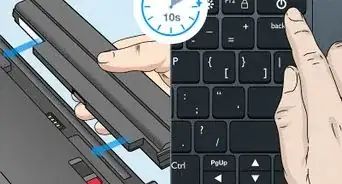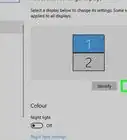This article was co-authored by Kathryn Kellogg. Kathryn Kellogg is the founder of goingzerowaste.com, a lifestyle website dedicated to breaking eco-friendly living down into a simple step-by-step process with lots of positivity and love. She's the author of 101 Ways to Go Zero Waste and spokesperson for plastic-free living for National Geographic.
There are 11 references cited in this article, which can be found at the bottom of the page.
This article has been viewed 46,882 times.
Getting rid of old phones, computers, or tablets isn’t as easy as just tossing them in the trash. In fact, in many states, throwing away old electronics is illegal. Because they contain hazardous substances like lead and mercury, electronics need to be disposed of properly.[1] If your old electronics are still functioning, donate them to a charity or community center. If they are no longer working, recycle them through a local program or the electronics manufacturer so that materials like plastic and metal can be reused.
Steps
Donating Unwanted Electronics
-
1Determine whether your electronics are in good condition to donate.[2] If your electronics are still functioning and less than 5 years old, they’re good to donate. Check that they don’t need any major repairs or replacement of parts, either. Most nonprofits won’t be able to afford those fixes.[3]
- If your electronics don’t meet those conditions, recycle them instead.
-
2Destroy all data on an electronic device before you donate it. If there’s any content on your device that you want to keep, back it up on another device or external hard drive first. Make sure your data is encrypted (iPhones do this automatically but for Androids, you may have to do it manually in your Settings menu). Then restore the electronic device to its original factory settings through a factory reset.[4]
- To do a factory reset on your phone or tablet, go into your settings menu. On iPhones or iPads, tap “General” and then “Reset.” On Androids, tap “Security” followed by “Security Wipe” (for a Blackberry) or “About” followed by “Reset” (for Windows phones).[5]
- Removing the SIM or SD card is another step to take against identity theft. Sometimes it will still contain data after a factory reset so take it out of the device and destroy it.
Advertisement -
3Take the device to a school, senior center, or community center. Many local schools or centers that don’t require a lot of bandwidth or advanced technology accept used electronics. They'll use the devices for students who may not have access to them at home or for elderly people learning how to use technology. Call ahead to find out what types of electronic devices they're looking for and how to donate them.[6]
- The National Cristina Foundation works to connect people looking to donate used electronics with schools that are in need. Their website lets you search for schools near you.[7]
-
4Donate the electronic device to a nonprofit organization. Always ask the organization beforehand what types of electronics they take and in what condition.[8] To find an organization, visit the Electronics Industry Alliance’s website where they provide a list of all the organizations across the country that accept electronics donations.
Recycling Electronic Devices
-
1Wipe all personal data on the device prior to recycling it. If you’re recycling a computer or laptop, do a secure wipe or reset which are both often found in the Settings or Start menu. For phones, tablets, and gaming consoles, do a factory reset which is found in your Settings menu.[11]
- Simply erasing data from electronics is not enough. Identity thieves have access to data recovery programs that restore erased information.[12]
- Download software that's cheap (and sometimes even free) that will wipe your device for you.
- Check with your recycling center to find out if they provide data destruction services. Many do it for you so you don’t have to do it yourself.
-
2Remove the batteries from the device to recycle them separately. Find out where to take your old batteries by contacting your community’s recycling service or going to a nearby household hazardous waste collection facility.[13] Call2Recycle, a national program that lets you recycle household batteries for free, also lists battery recycling sites in every state on its website.[14]
-
3Take your electronics to a collection site or recycling center in your area. Contact your local waste management service or public works department for a list of spots to recycle your electronics.[15] Ask what electronics they do (and do not) accept before going. The National Center for Electronics Recycling also has a database of electronics recyclers around the country that’s free to search.[16]
-
4Ask the manufacturer if they offer any take-back programs. Contact the brand (Apple, Sprint, Dell, etc.) directly and find out what services they have for recycling old electronics. Ask about the details for shipping and whether they provide free postage or containers for mailing back your device. Many manufacturers also give discounts or perks for recycling your device through them.[19]
- Ask the electronics stores (like Best Buy or RadioShack) in your area if they have an electronics recycling program. They also may be able to help you ship an electronic device back to the manufacturer.
- Some states, like New York, have laws that require electronics manufacturers to take back their products for free for recycling.[20]
Expert Q&A
Did you know you can get expert answers for this article?
Unlock expert answers by supporting wikiHow
-
QuestionHow can I locate a good place to recycle my electronics?
 Kathryn KelloggKathryn Kellogg is the founder of goingzerowaste.com, a lifestyle website dedicated to breaking eco-friendly living down into a simple step-by-step process with lots of positivity and love. She's the author of 101 Ways to Go Zero Waste and spokesperson for plastic-free living for National Geographic.
Kathryn KelloggKathryn Kellogg is the founder of goingzerowaste.com, a lifestyle website dedicated to breaking eco-friendly living down into a simple step-by-step process with lots of positivity and love. She's the author of 101 Ways to Go Zero Waste and spokesperson for plastic-free living for National Geographic.
Sustainability Specialist
-
QuestionHow can I reduce the amount of electronic waste I produce?
 Kathryn KelloggKathryn Kellogg is the founder of goingzerowaste.com, a lifestyle website dedicated to breaking eco-friendly living down into a simple step-by-step process with lots of positivity and love. She's the author of 101 Ways to Go Zero Waste and spokesperson for plastic-free living for National Geographic.
Kathryn KelloggKathryn Kellogg is the founder of goingzerowaste.com, a lifestyle website dedicated to breaking eco-friendly living down into a simple step-by-step process with lots of positivity and love. She's the author of 101 Ways to Go Zero Waste and spokesperson for plastic-free living for National Geographic.
Sustainability Specialist
-
QuestionWhere can I recycle an old cellphone?
 Kathryn KelloggKathryn Kellogg is the founder of goingzerowaste.com, a lifestyle website dedicated to breaking eco-friendly living down into a simple step-by-step process with lots of positivity and love. She's the author of 101 Ways to Go Zero Waste and spokesperson for plastic-free living for National Geographic.
Kathryn KelloggKathryn Kellogg is the founder of goingzerowaste.com, a lifestyle website dedicated to breaking eco-friendly living down into a simple step-by-step process with lots of positivity and love. She's the author of 101 Ways to Go Zero Waste and spokesperson for plastic-free living for National Geographic.
Sustainability Specialist
Warnings
- Never throw away batteries or electronics in the trash, unless you already checked with your local waste management. The materials in these products are hazardous and toxic to the environment.⧼thumbs_response⧽
- Electronic waste isn't limited to computers and phones. Certain appliances, like microwaves, are also considered e-waste.⧼thumbs_response⧽
- Always wipe your electronics clean to remove personal data before you recycle or donate them. This will prevent identity theft.⧼thumbs_response⧽
References
- ↑ Kathryn Kellogg. Sustainability Specialist. Expert Interview. 28 June 2019.
- ↑ Kathryn Kellogg. Sustainability Specialist. Expert Interview. 28 June 2019.
- ↑ https://www.budgetdumpster.com/resources/how-to-dispose-of-electronics.php
- ↑ https://www.consumerreports.org/cro/2013/11/remove-personal-data-from-any-device/index.htm
- ↑ https://www.consumerreports.org/cro/2013/11/remove-personal-data-from-any-device/index.htm
- ↑ http://www.electronicstakeback.com/how-to-recycle-electronics/
- ↑ https://www.cristina.org/
- ↑ Kathryn Kellogg. Sustainability Specialist. Expert Interview. 28 June 2019.
- ↑ https://www.budgetdumpster.com/resources/how-to-dispose-of-electronics.php
- ↑ https://www.consumerreports.org/recycling/how-to-recycle-electronics/
- ↑ https://www.consumerreports.org/cro/2013/11/remove-personal-data-from-any-device/index.htm
- ↑ https://www.consumerreports.org/cro/2013/11/remove-personal-data-from-any-device/index.htm
- ↑ Kathryn Kellogg. Sustainability Specialist. Expert Interview. 28 June 2019.
- ↑ https://www.call2recycle.org/
- ↑ Kathryn Kellogg. Sustainability Specialist. Expert Interview. 28 June 2019.
- ↑ https://www.thebalancecareers.com/donate-used-computers-monitors-tvs-3515022
- ↑ https://www.engadget.com/2018/04/21/how-to-recycle-gadgets-electronics-earth-day/
- ↑ https://ecology.wa.gov/Regulations-Permits/Guidance-technical-assistance/Electronics-Ecycle-guidance-and-reports
- ↑ https://www.consumerreports.org/recycling/how-to-recycle-electronics/
- ↑ https://www1.nyc.gov/nyc-resources/service/4661/electronic-disposal-information

